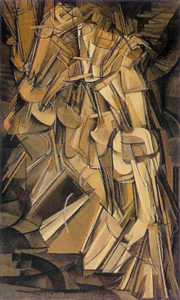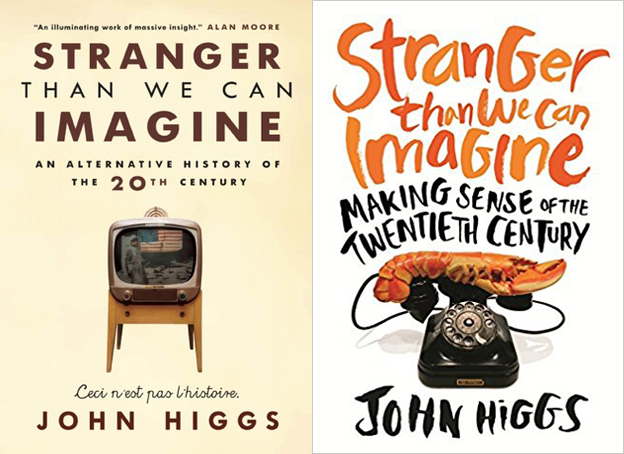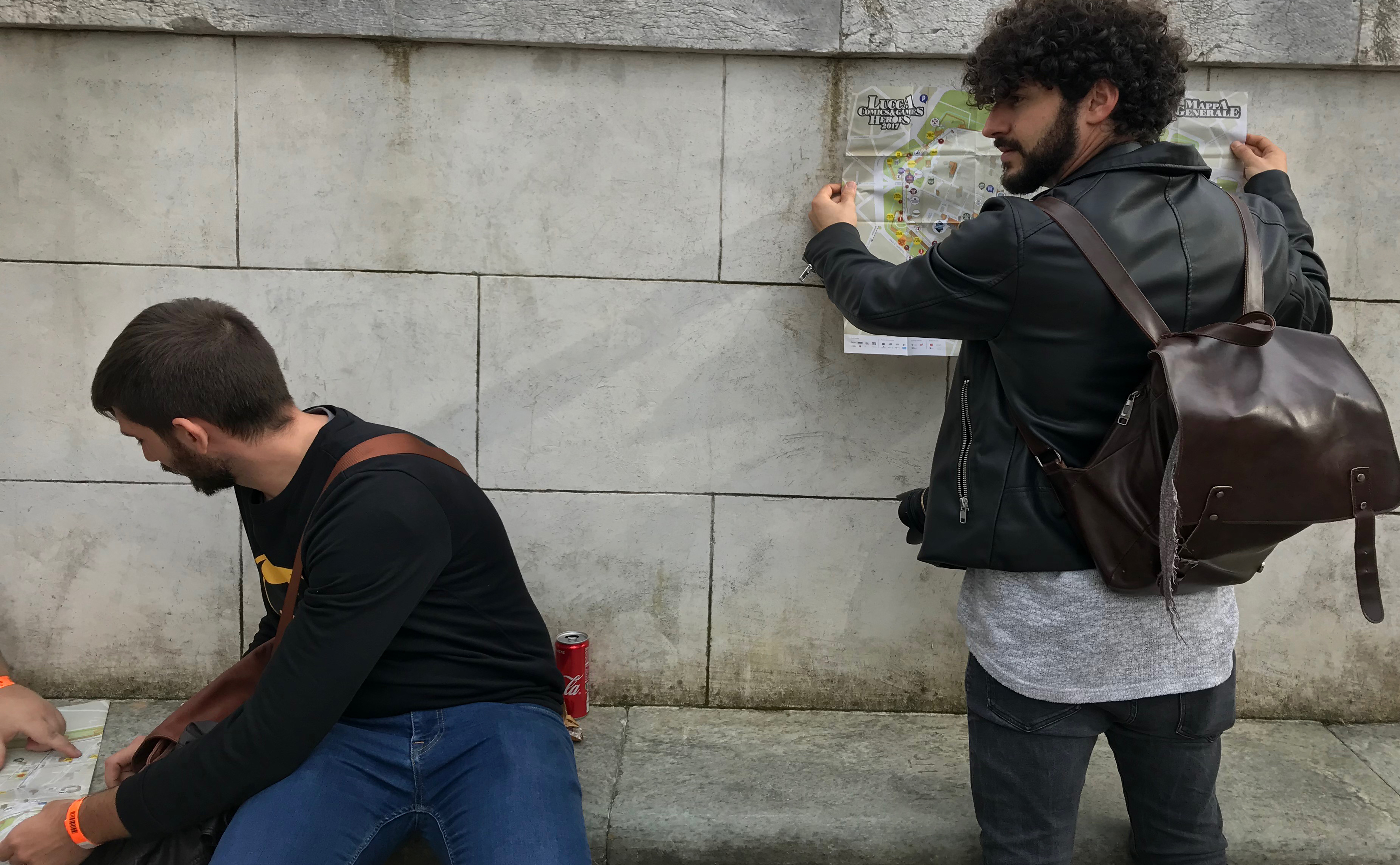🔝
Don’t judge a book by its cover, or by its title, or by its variations. After I read it, I found this book has two covers. Not unusual for an older book that’s been republished in a new edition, but this one was published only two years ago in 2015. It also has a second subtitle. The title revision probably piggybacked the cover change, or vice versa. Whether the publisher’s marketing department thought it smart, or the author wanted to make refinements, neither revision justifies the changes. One cover is boring, the other ugly. One subtitle may be a bit more descriptive of the book’s contents, but it doesn’t matter. The title is clear either way, the author is taking us into a new spacetime that hasn’t previously been explored.
Luck and truth have something in common, both are unprovable. This has not always been generally understood. The beliefs in superstition and absolute truth have been a mainstay of civilization since historical times. Over the past century or so, there have been many shifts in our perspective. Or another way of saying it, there’s a mystery bag of new truths. With luck, the new truths of the twenty-first century will become understandable. This new perspective of the world is the subject of John Higgs’ reevaluation of the last century’s history. He cleverly disconnects the radical changes in physics, art, mathematics, politics, sociology, psychology, and technology from a senescent notion : the omphalos. Not a word most of us are familiar with. Its root is the Greek word for navel, from which umbilical is derived. Though that might conjure navel gazing, its meaning is closer to the idea of a central point of reference, a fixed point of view, an axis around which all rotates.
The old world view had the earth at the center of the universe, humanity at the center of the earth. Stable, easy to understand, and obvious to the unaided senses. In the modern era geo-anthro-centrism has been turned inside-out. You might snap back and say that its demise isn’t a modern concept. We’ve known the earth wasn’t at the center since Copernicus posited the heliocentric system of our immediate celestial neighborhood. But helio-centrism was only one little chink to the old system of thought. What it really took to displace our conceptual small mindedness was a series of keystone crumbling discoveries that started around the turn of the second to last century, and marched on up to the turn of the 21st century. This hundred year span is the dark wood that Higgs leads us through and beyond into intergalactic space where nothing is everything, and everything we know, our planet included, is reduced to a speck in infinity.
As he cites in the first chapter, Einstein’s theory of relativity was the next big hatchet blow into the old order of orthodoxy. He never closely examines if he believes this was the initiator of the collapse of the single perspective view of the world, or only coincident with the other transformations in our understanding of ourselves and our place in the cosmos. No matter, the parallels he draws from there on underscore and weave together the relativity of physics with the relativity of everything else.

Nude Descending a Staircase
In chapter two, he heads into the art world. If Impressionism’s rejection of the academy steered the arts away from the Romantic ideals of visual realism, Cubism and Dadaism flipped the arts upside down. Multiple perspectives in cubism dissolved the single view, linear perspective of the Renaissance and the x-y-z axes of Euclidean geometry. Dada destroyed the rest. The poster boy for Dada is most likely Marcel Duchamp. He’s known for his “Nude Descending a Staircase,” a cubist painting that not only shows multiple view points of the subject in space, but again in time. He also experimented with chance in the production of art, not unlike Pollock’s drip painting, or John Cage’s aleatoric music. But his most famous poke at art is “Fountain,” a urinal set on its side. It was anti everything. Although Duchamp is given credit for the infamous piece, it’s probable that he had only grabbed the credit—if that should be anything to covet.
If Duchamp’s most famous artwork was not conceived by him, how does this affect his standing as an artist?
The key to his work can be found in a posthumous tribute paid to Duchamp by his friend, the American artist Jasper Johns. Johns spoke of Duchamp’s “persistent attempts to destroy frames of reference.” The frames of reference he was referring to were those of the traditional art establishment, where art was understood to be paintings created by the talent of the artist and then presented to a grateful audience. The reason why Duchamp presented mass-manufactured objects as art was to challenge and ultimately undermine the understanding of what a piece of art [is].
 Duchamp gets his own, as Higgs reveals the deception, pretense if you will, where his words come back around to accuse himself. It’s revealed in the story of Baroness Elsa and her relationship with Marcel. She was an odd woman whose unconventional behavior led the way for Duchamp. Much of what he gained his fame upon began from her bizarre artistic dawdling. As with many other women involved with a famous artist, she was overshadowed by him then, and forgotten by historians later.
Duchamp gets his own, as Higgs reveals the deception, pretense if you will, where his words come back around to accuse himself. It’s revealed in the story of Baroness Elsa and her relationship with Marcel. She was an odd woman whose unconventional behavior led the way for Duchamp. Much of what he gained his fame upon began from her bizarre artistic dawdling. As with many other women involved with a famous artist, she was overshadowed by him then, and forgotten by historians later.
His standing as an artist, from the old point of view, is null and void. He’s a fake, a pretender, a cheat and a thief. Ah, but from the new relativistic view, he’s that and much more. He’s a genius for knowing what to steal. He’s an original for being the first to get noticed. He’s authentic for allowing others to put him in the spotlight. He’s the real thing because he took ownership of the entitlement.
Duchamp experimented with chance by dropping pieces of string onto a canvas on the ground, and then gluing them in the position they fell. The aesthetic result was produced by luck, not talent. He did this to undermine the idea that an artist could take credit for their work. . . He continually explored the idea that art could not be understood as the product of an artist, for as he said in 1957, “The creative act is not performed by the artist alone; the spectator brings the work in contact with the external world by deciphering and interpreting its inner qualifications and thus adds his contribution to the creative act.
Sounds to me more like philosophy than art, or the philosophy of art, whatever that is. It’s an interesting loop that when taken to its logical conclusion short circuits the mind. The artist does not work in isolation, never did. But the concepts of art, artist, and art’s purpose have been more than questioned, they’ve been redefined with a definition that is indefinite : relativistic.
Art relativism has its roots in the modernist movements of the early 20th century. The product of relativism, however, doesn’t hit its stride until postmodernism strikes. Higgs takes many stabs at postmodernism, a period of recent history supported by academics who are supposedly embarrassed by it, yet are those most guilty of practicing and perpetuating it.
The problem was that there was no mechanism inside postmodernism for weeding out the meaningless from the meaningful. As a result it became possible to build an academic career by sounding clever, rather than being clever.
The power of art for social change never existed. It’s too stealth when it’s good; too obtuse when it’s bad; or covered up by glossy poppism. In any case, the message gets through to too few minds, if any, or noticed only by those who have already got it and don’t need to get it. The sea-change in attitudes necessary won’t come from pop songs (music with a message for the masses), cinema (the new mass-literature), or literature (the pen is mightier than the sword). Art’s purpose was never intellectual. It was joy, beauty, emotional expression, and storytelling—meaningful only in how it enhances the way we feel about our world. With contemporaneous art, post-postmodernism, the problem has dropped to the next level of the inferno. The word art has been without a reference point for so long, it’s been forgotten that it ever had one.
Visual art wasn’t the only art to lose its center, music spun off into groundless territory, too. Dodecaphonic music, some call it dodecacophony, initiated by the Second Viennese School, led by Arnold Schoenberg and his most noted students, Alban Berg and Anton Webern, gutted music of its center. It’s an interesting concept. The Western musical system splits the octave into twelve equally spaced notes, semi-tones or half-tones. This is called a chromatic scale—chromatic because it contains all the notes, or ‘colors.’ Conventional tonal scales only use seven out of the twelve notes to make a pattern of whole-tone and half-tone steps. You are probably familiar with the song “Do-Re-Mi.” Do-Re-Mi are the first three notes of a major scale, sequentially a whole-step apart. Mi is followed by Fa, a half-step up, then three more whole-steps, Sol-La-Ti, and a final half-step that returns to Do, one octave higher. But what makes tonal music tonal is Do. It’s the note that signals ‘home,’ a place to start and finish—the center. No matter which key, major or minor, you know when the song is done and feels complete by its resolution to Do. A chromatic scale, since every note is equally one half-step apart, has no pattern to it, and consequently, no way to signal when you’ve hit home, or Do—there is no center. The author doesn’t mention this unambiguous example of the loss of the omphalos, but twelve-tone atonalism was another major uprising in the arts. It also became deeply ingrained in academia. The intellectual appeal of dodecaphonic theory is undeniable. The flip side is, it’s completely heartless and unlistenable. The emotional aspects of atonal music was more a reflection of the sociopolitical horrors that the first half of the twentieth century was enduring. Academia clung to the torturous cacophony of twelve-tone theory well into the 1970s, much to the detriment of the world of music.
Higgs does bring up the topic of popular music.
A rejection of mainstream consumerist values was evident to everything he [Kurt Cobain of Nirvana] did, from the music he made to the clothes he wore. Yet none of that troubled the music industry. His music was sold to millions, as if it were no different to the music of manufactured teen bands such as [redacted boy band name]. Cobain’s values were, to the industry, a selling point which increased the consumerism he was against. His concern about his increasing fame was already evident on Nirvana’s breakthrough album Nevermind, which went on to sell over 30 million copies. On the single In Bloom he attacks members of his audience who liked to sing along but didn’t understand what he was saying.
From the upheaval in the arts, the book moves on to political turbulence. Attitudes concerning what is good government have changed substantially. Although the world still has despots and dictators, corrupt and deceitful politicians, our expectations of government have been altered by the other transformations of perception.
This was the bargain between the ruler and the ruled, which the French called noblesse oblige. It was the understanding that with privilege came responsibility. Should a lord provide stability, safety and just and equal law, then the people would pledge him their loyalty in return. This loyalty created legitimacy, which allowed rulers to pursue the wealth, power and prestige they craved. What kings really liked were wars that allowed them to subdue other kings. When kings had other kings under their protection, it allowed them to use an even more impressive title, such as emperor, kaiser or tsar.
It’s not often someone points out the platter of elephant dung in the middle of the buffet table that no one wants to notice, and says, “What kings really liked were wars that allowed them to subdue other kings.” The titles have changed, e.g., president, prime minister, supreme leader, chief executive officer, but the exploits are the same, conquer and subdue through the use of force, police, armies, or marketplace manipulations. Instead of fighting each other face-to-face, they get their power by enlisting other people, those who pledge their allegiance to the country, or company, or leader who isn’t exactly providing “stability, safety and just and equal law.” The kings expect the people to pay with their lives, and to suffer austerity, and to sacrifice time-off, vacation, benefits, etc. In other words, make the king richer while the people wait for the “trickle down.” The bargain has been betrayed. It always is.
Corporate shareholders had only limited liability for what the corporation did. They couldn’t lose more than the value of their stock. This system made shares easy to trade and increased participation in the stock market, because the credit-worthiness of the stockholder was no longer a concern that the market had to take on board. Corporations, it seemed, had been granted the great dream of the twentieth century: individualism without responsibility.
But corporations did have a responsibility, and this strongly bound their actions. They were required by law to put their shareholders’ interests above everything else, and that included the interests of their employees, their customers, and the public good. Those shareholders’ interests were almost entirely concerned with making money, so those corporations were legally bound to pursue maximum profit.
After ruling order, economics is punctured. Another of the new theories of relativity is the rise of individualism—everything is relative to the self : I-me-my. One of the main hypotheses used by modern economists is the idea that individuals act in rational self-interest, and that a free market place of rational, self-interested individuals creates its own equilibrium and the best of all possible outcomes for all participants. Somehow these economists, whose theory has been tested in the real world many times during the last couple of hundred years, still haven’t examined the results objectively, or for that matter, not even relativistically.
In the early 1950s the American mathematician John Nash studied competitive, non cooperative systems, a branch of mathematics called game theory. It modeled the decisions made by self-interested individuals who operated in an arena devoid of trust. Game theory demonstrated mathematically that the pursuits of self-interest was flawed.
The manner in which individuals pursuing their own self-interest harm themselves is known, in economics, as the tragedy of the commons. This analogy dates back to pre-industrial England, when shepherds grazed their flock on shared or “common” ground. Rationally, a shepherd would benefit most by allowing his sheep to eat as much of the grass on the common land as possible, before it was exhausted by the flocks of other shepherds. But the ultimate result of this logic would harm all shepherds, because the common land would be quickly grazed bare. The best long-term result would be to control the exploitation of the common ground in a sustainable way, as this would offer each shepherd benefits that were smaller in the short term but considerably larger over time. Without such a system in place, rational self-interest dictates that the shepherd must act in a way that ultimately hurts him. A more contemporary analogy would be a corporation that desires to reduce its tax liability and employee wage bill, even though such actions would damage the thriving middle class it needs to purchase its products.
Sounds familiar. It’s exactly what has happened, and continues happening to forests, oceans, natural resources, and economies around the world by deforestation, overfishing, nitrate runoff, wasteful consumption, and overseas outsourcing/exploitation. We have so many examples of the failure of the free market, the failure of the growth principle, and the fallacious belief in “rational” self-interest, it would take a massive book to outline them all. Throughout his argument, Higgs fuses individualism with relativism and the loss of the security of an omphalos. He builds momentum to the mass-murders committed by Stalin, Hitler, Mao, among others, and the devastation of two World Wars, using them to illustrate the loss of stable ground that was unleashed by the tyranny of individualism. Make note that he never bashes individualism, but instead, shows us how no man is an island. Unless you are a hermit—living alone in a cave, no contact with a single other person—individualism is a self-destructive dead-end. Each of us is dependent on countless other people. So dependent that it would be difficult, probably impossible, to survive a week without any aid from other people or anything supplied or made by another person including food, clothing, shelter. Complex civilization depends on trust and highly coordinated cooperation. Betraying others’ trust sets us up for being betrayed and destabilizes our essential civil networks.
Genocides arose during the perfect storm of technology, nationalism, individualism and the political rise of psychopaths. They revealed that humans were not the rational actors they prided themselves on being, dutifully building a better world year after year. Rationality was the product of the conscious mind, but that mind rested on irrational foundations of the unconscious. The individual was more complicated than originally assumed. If there were some form of certainty to be found in the post-omphalos world, it wouldn’t be found in the immaterial world of the mind.
Here I might suggest that he’s missed a subtle, yet crucial detail. The certainty we used to have, and still long to recover from the past, is not necessarily necessary. But the mind, the conscious, logical, rational mind, is central to overtaking and controlling the irrational, illogical, emotional reptilian-mind, which when allowed free reign is guaranteed to make trouble. As long as our reptilian intuition rules over the prefrontal-cortex intellect, humans will continue to search for a savior omphalos to follow unconsciously. Notwithstanding, the points he makes connect together into a tightly integrated argument.
This one is ripe. “The American movie industry’s move from the East Coast to California was in part promoted by patent disputes. The intention was to get as far away as possible from the lawyers of the Motion Pictures Patents Company. The MPPC claimed intellectual ownership of the [ready for this?] sprocket holes which mark the edges of each roll of film, and wanted to be handsomely rewarded. Considering the twenty-first-century industry’s love of intellectual property, it is an irony that Hollywood itself was founded in the spirit of intellectual piracy.” This, again, refers to the concept of a corporation being the same, and being treated the same, as an individual. An idea so laughable it’s baffling to think that huge portions of law are devoted to giving mindless, soulless corporations human rights. It’s also more of the “I-me-my” individualistic attitude. I own it (even though I didn’t create it), and I will own it forever, and you will have to pay for it—forever.
If science fiction is our cultural early-warning system, its move away from individualism tells us something about the direction we are headed. This should grab our attention, especially when, in the years after the Second World War, it became apparent just how dark the cult of the self could get.
This is not the end of the book. I still had nearly two dozen additional pages highlighted for review. There’s more in the book than you can imagine. The cover doesn’t do it justice, nor does the title. Stranger Than We Can Imagine is not strange. He’s pulling on quantum theory’s strangeness, but making sense of the 20th century doesn’t require a degree in quantum physics. It only requires a mind open to new ideas that seem strange to pre-twenty-first century heads. The cult of the self is still rearing its beastly hooves, although, with any luck, it may be in its death throes.

In the end, he looks at the next shift, from a collective unconscious to a collective consciousness. This shift is powered by the new connections enabled through communication technology, in particular the internet. The connections and “transparency” that the internet opens to us give a view of our world in ways never before imagined, and more importantly, change how we feel about the other. People on the opposite side of the planet are no longer foreigners, they’re next door neighbors. He sees great possibilities for progress, especially from those who are digital natives. Twentieth century thinkers have not caught up. Their thought patterns are still fixed on individualism, tribalism and nationalism. The new relativity ties the world together. There’s no denying the astronomical potential. The millennials, in his opinion, are the leaders to a future focussed on collectivism rather than individualism. We’ve had glimpses of these yet to materialize hopes, but this new global view still needs to reach critical mass. Higgs’ optimism assumes masses of thoughtful, logical, rational behavior. The evidence of that forthcoming from the millennials is, to date, weak.
See related posts : [Crutches] & [Really Fake].
Stranger Than We Can Imagine : An Alternative History of the 20th Century, or Stranger Than We Can Imagine : Making Sense of the Twentieth Century, John Higgs, Weidenfeld & Nicolson / The Orion Publishing Group (ebook Soft Skull Press), 2015
![[art]by[odo]](https://artbyodo.net/wordpress/wp-content/uploads/2011/03/cropped-Header.jpg)




